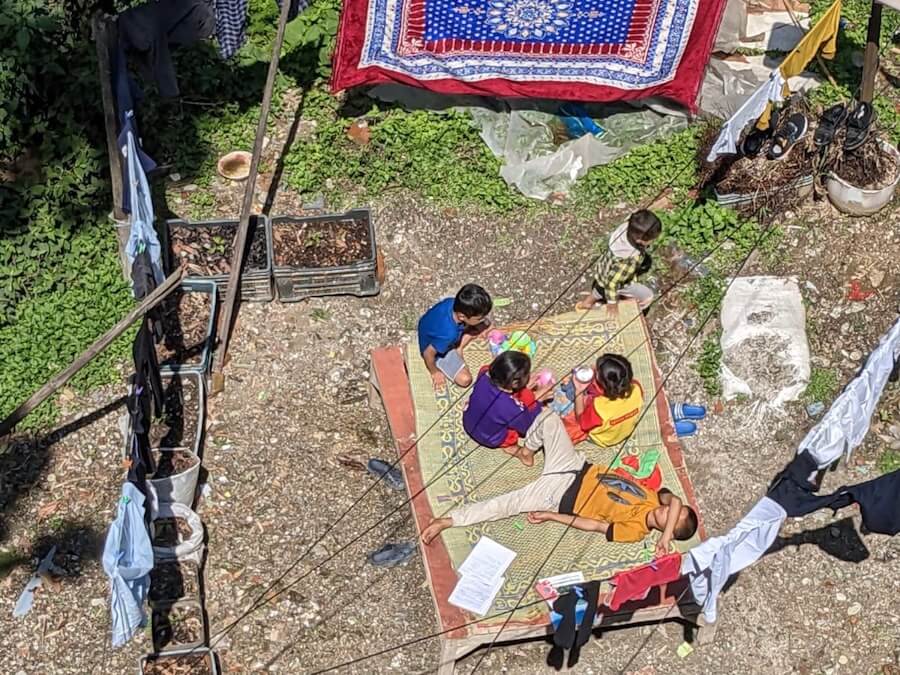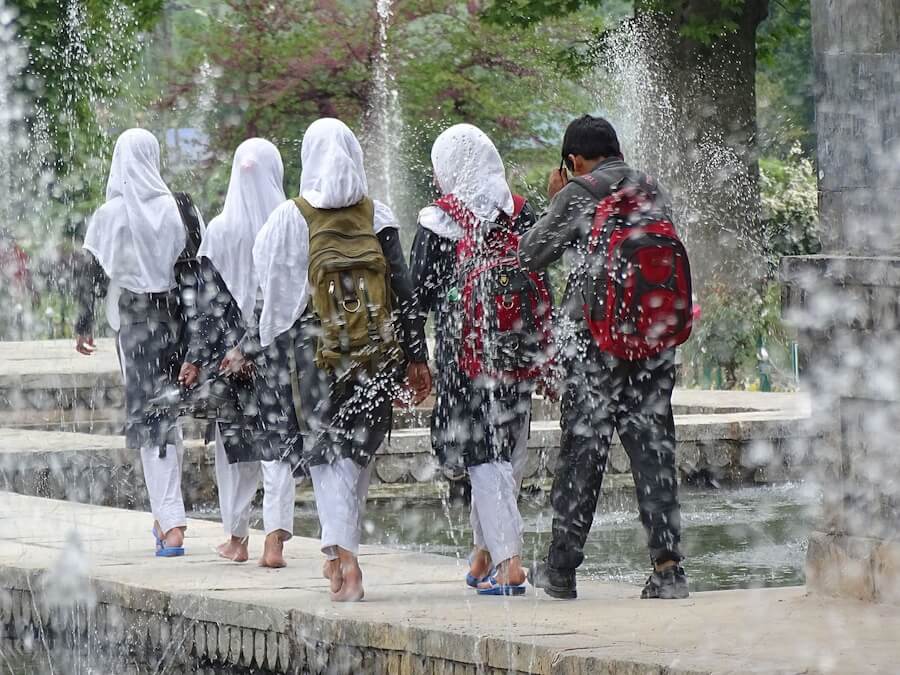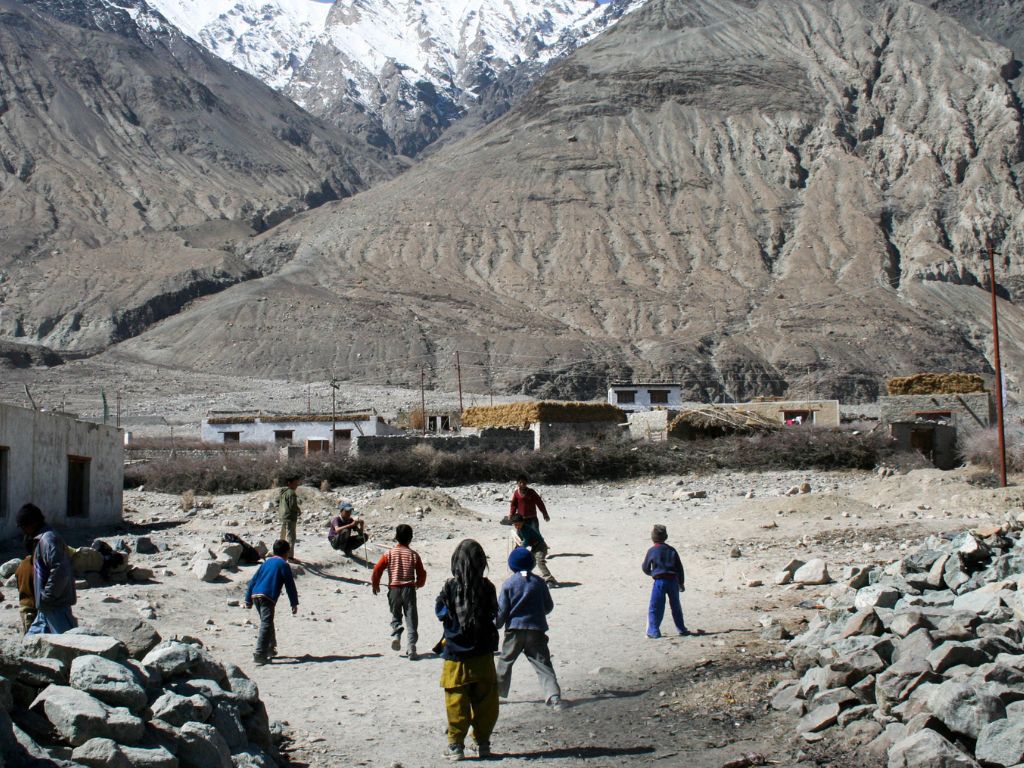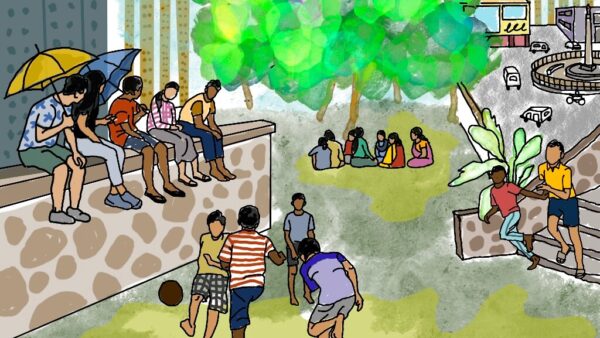“If home is found on both sides of the globe,
home is of course here – and always a missed land.
The hour’s come to redeem the pledge (not wholly?)
in Fate’s “long years ago we made a tryst” land…
Will the Doomsayers die, bitten with envy,
when the springtime returns to our dismissed land?
The prisons fill with the cries of children.
Then how do you subsist, how do you persist, Land?
These lines from the late Kashmiri American poet Agha Shahid Ali’s verse, Land, returned poignantly to memory as we reached out to families in border cities after India and Pakistan bombarded each other’s border facilities in early May. The four-day war was paused with a ceasefire but its scars were in the homes and gardens of people in cities like Amritsar, Poonch and Jammu who found themselves in the crosshairs only because of their location. And echoes of violence lingered at the eastern end in the towns of Kachai and Kangpokpi in Manipur where the brutal conflict has raged for two years this May.
As drones whirred overhead, mortar shells whizzed by, fighter aircraft pierced the night sky, explosions were seen in the distance, fellow citizens lustily called for more bombing and “final solution” on social media, television reporting turned the war into yet another screen game, and body bags and lost aircraft were counted, play was the farthest from the minds of children watching this unfold – without the context and knowledge to make sense of it. Their world of books, football and cricket, video games, intense fights, family dinners and bedtime stories lay crumbled. They might not have known dystopia as a word but they felt it all right.
“Mama, blackout. Mama, blackout,” screamed the eight-year-old boy to his mother Aanchal Khanna, a content writer, in their dark house in Amritsar, around 28 kilometres from the border. It was a power cut, a regular event since the shelling began, but for the child it was the darkness brought on by the war. Sirens did not stop for days, schools remained shut, teachers bravely took classes online but the students were distracted, telephone calls to relatives and friends were all about bunkers and staying safe.
Khanna’s sons aged nine and eight adjusted to the new routine – on the surface. But their inner world seeps through. “They hear the sirens go off when asleep. The younger one is scared to sleep by himself. They see and hear the news. For the first time, I see fear take shape, anxiety take shape, in their eyes. I also see withdrawal, they don’t want to even play. The focus is lost,” lamented Khanna. The boys wanted to become soldiers and would pester their parents to buy them army costumes – not any more. “I don’t want to be a soldier…I am not that brave. It is safer to become an IPL player,” her younger son said to Khanna.
Those who bay for war from the comfort of their homes in other cities, demand more shelling of the other side, have no idea of what families in border cities go through as wartime activities pick up pace, she says. The mental tensions and trauma hit people and percolated down to children in these cities setting in motion restrictions, panic, anxiety, and trauma that can last a lifetime. “This is hardly understood by those who want war,” sighed Khanna.
When life seems so fragile and mental health of children becomes a casualty of the conflict, as caregivers struggle to address the symptoms that crop up in children, all manner of outdoor play and team sports are shut down to keep children safe in the days of conflict. Without play, their well-being is adversely impacted, mental health issues show up where none were diagnosed. These cities, which should have reverberated with joyous screams of children playing in the summer, besides the whirring wheels of commerce, hold an eerie and edgy silence. Who will send children to play even to the next-door compound? Who will return their innocent worldview? How does this high price of war get counted, if ever?

Photo: Wikimedia Commons
The struggle to live normally
One of the most heart-rending stories that trickled in from Poonch, border town in Jammu, was of the 12-year-old twins Urba Fatima and Zain Ali losing their lives in the cross-border shelling from Pakistan in the early hours of May 7. The twins were among the 27 victims of shelling in Jammu and Kashmir. As luck would have it, they and their parents had moved from Kalai village, about 10 kilometres away, to Poonch only two months earlier for better schooling.[1] In all, four children died in Poonch.
The pain and loss, the inexplicable grief of the unnecessary deaths, hit hard even for journalist Nidhi Suresh who went to Poonch for reporting. She recalled an incident of how a man was killed while trying to usher his son, Class 7 student, to the safety of the basement. As luck would have it, the father took the hit and it fell on the young lad to watch his father go. “How would he ever make sense of this grief?” wondered Suresh in a conversation with Question of Cities.
Shelling is not new in the LOC but Poonch was badly hit this time. Children kept hearing sounds and developed a game of counting for fun. “It became a practice for them to be on the roof and make a game of counting the shelling and drones. It became a part of their new reality,” rued Suresh, “it was very heart-breaking.”
She was the cynosure of children’s attention when she asked about the bunkers in homes and elsewhere; they laughed that she had not known one earlier what was the reality of their young lives. “The children were intrigued by me. A lot of villages along the LOC have individual bunkers, each home has its own. The children know they have to go down there and sleep if there’s shelling. But the price they pay is also on a daily basis. Mothers told me how it was really nerve-wracking to send children out to play. Any small untoward sound and they want to usher the children inside,” described Suresh.
The disruption in their education, the interruptions and anxieties in their play, and their mental health turning more fragile are a triple whammy that does not get easily reported or discussed, she pointed out. Children lose out on the sense of normalcy. When shelling and drone attacks become the new normal, with restrictions on play, they tend to convert “play into a mode of cognition that seeks to assert juvenile order over chaotic and dangerous circumstances,” pointed out this study.[2] Aanchal Khanna’s sons now associate anything negative with ‘Pakistan’. “If anyone is losing a game, they start calling it as Pakistan,” she rued.

Photo: Wikimedia Commons
Play not a priority
From Kashmir, the most militarised zone in the world, to Gaza and Ukraine that have seen relentless and targeted bombing, the plight of children is distressing. Over 450 million children were living in the world’s most dangerous war zones in 2022, the highest number in over a decade, in constant fear and in grave violation of their rights, seriously impacting their mental health.[3][4] With their physical and mental health in tatters, their right to play sounds facetious. Leisure becomes a luxury, outdoor play risky.
After Operation Sindoor, Seerat Narang, a resident of Amritsar, saw a behavioural change in her younger daughter aged nine. The child who had to be forced off the football arena is now reluctant to even take the field. “Her coach told me that she’s irritable, cranky, and doesn’t want to play. Whenever there’s talk of a blackout, she panics and cries. She developed a real phobia within days, it might take a long time to recover,” shared the mother.
Her older daughter aged 14 is relatively calm, more responsible and sensitive, but no one can tell what fears lurk within her. As the ceasefire took effect, schools tentatively reopened in Amritsar. “My younger one refused to go, convinced that drones would hit the building,” says Narang. Their enthusiasm for a summer holiday has ebbed.
Play and leisure are not what children think about in war and conflict, but months and years of violence create children who cannot even recognise play when they see it, wrote Daniel Feldman in his research paper Children’s Play in the Shadow of War.[5] This is hardly surprising or reassuring. Psychiatrists say that children either withdraw into their inner worlds, which too are tinged by violence, or treat real conflict in terms of games.
Mahima Chopra, a Jammu resident, told us that her eight-year-old son watched news and talked politics too but remained scared throughout the four-day war. Her younger son, only four years old, treated it all like a game. “He doesn’t know what a bomb or drone is, what effects there will be. He thought a game was on.” This, at least, paused with the ceasefire. The Meitei-Kuki violence in Manipur has raged since May 2023 with few places for children to be hidden from its brutality.
An educator based in Kachai, who spoke on the condition of anonymity, told us that in the more volatile regions like Imphal and Churachandpur, hunger and displacement have dominated everyday life, and essential aspects like play, education, and mental health have been forgotten. The focus is on immediate needs — where to sleep and what to eat, leaving no resources for play or psychological support. A community health worker from Manipur, who also preferred to be anonymous, shared that the Meitei-Kuki violence affected the children severely as they saw houses being burnt or damaged. All they know is that the ‘other’ burnt down their house and they had to flee. “During an exercise, when Meitei children were asked to draw, they drew Kukis burning their house,” she said.
Can play be therapy?
If play is a child’s natural expression – and venting out too – then can it be a part of their recovery from conflict and violence? Puppets, storybooks, pictures, figurines, animals, and other play therapy tools, can help children process their emotions; play therapy can be an effective therapeutic tool to help children with emotional and cognitive processing during stress, changes, or loss, stated this research.[6]

Photo: Wikimedia Commons
Mental health experts and early childhood development specialists say that the years from birth to five are most important for a child’s cognitive, emotional and social development, and children need stable routines and relationships with adults they trust during this crucial period.[7] For this, parents and caregivers have to keep calm during violent conflicts and maintain routines which is hard, counter their own anxiety and fear which is a tall ask, and somehow keep the play times going if safe to do so.
But the least that can be done is for people in positions of authority – from political leaders to school principals and local top cops – to speak to children, reassure them of safety measures, and help soothe their nerves. Seerat Narang, Amritsar resident for 17 years facing the shelling for the first time, suggested that “the authorities organise classes in schools and talk to children about the precautions during war, how to handle it emotionally, how not to panic, how to stay positive. The Prime Minister should speak to them too in a televised address.”
June 11 last year was the first International Day of Play following a campaign that called on the United Nations to promote play in the lives of children everywhere. It was an urgent need to “put play back on the agenda”. But children in war situations and conflict zones, in the words of Palestinian poet Mosab Abu Toha, “are not learning how to paint, how to colour, how to ride their bikes – they are learning to survive.”[8]
The world’s leaders have to find ways to build a better, more peaceful and playful, world for children. The land, to paraphrase Agha Shahid Ali, must not bear the cries of children.
Cover photo: Wikimedia Commons
Shobha Surin, currently based in Bhubaneswar, is a journalist with 20 years of experience in newsrooms in Mumbai. An Associate Editor at Question of Cities, she is concerned about climate change and is learning about sustainable development.
Jashvitha Dhagey is a multimedia journalist and researcher. A recipient of the Laadli Media Award consecutively in 2023 and 2024, she observes and chronicles the multiple interactions between people, between people and power, and society and media. She developed a deep interest in the way cities function, watching Mumbai at work. She holds a post-graduate diploma in Social Communications Media from Sophia Polytechnic.
Reporting inputs from Manipur by Krittika Bhuiya




